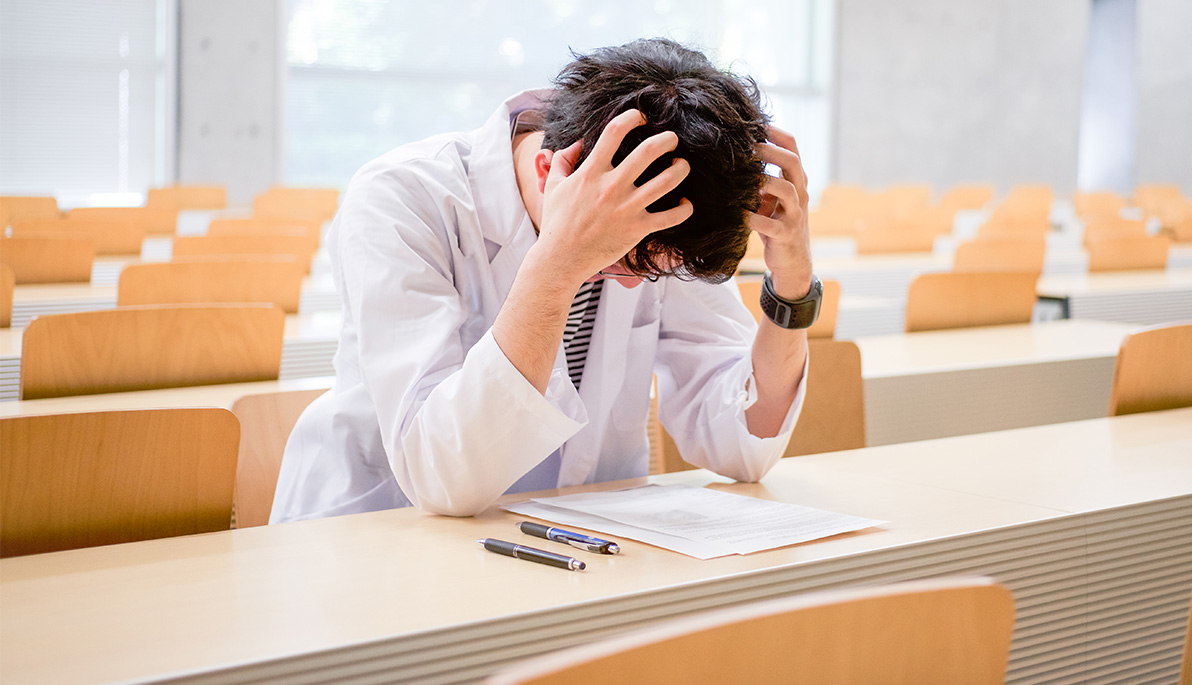News
Physician Burnout: Finding Ways to Help Medical Students Lead Healthier Lives
June 16, 2017
With the health of their patients their primary concern, physicians often carry the weight of the well-being of others on their shoulders without focusing on their own physical and emotional health. It’s a habit that can lead to “physician burnout.” In 2015, the journal Mayo Clinic Proceedings stated that at least 50 percent of U.S. physicians experienced professional burnout. Most alarming, a recent study by the American Foundation of Suicide Prevention estimated 300-400 physician suicide deaths per year.
To address this pressing issue, physicians recently gathered for a presentation and discussion on the topic at an event hosted by the New York Colleges of Osteopathic Medicine Educational Consortium (NYCOMEC) at NYIT-Old Westbury in association with NYIT College of Osteopathic Medicine (NYITCOM).
Robert Piccinini, D.O., a psychologist and member of the American Osteopathic Association (AOA) Taskforce on Physician Wellness who spoke at the event said there is a critical need for medical professionals and educators to be aware of the ways burnout can negatively impact both doctors and their patients.
According to Piccinini, physician well-being is a basic need overlooked by many doctors, who are often characterized as workaholics prone to perfectionism and concealing weakness. “As a doctor burns out, symptoms include loss of empathy and compassion, reduced quality of care, and the tendency to become cynical and sarcastic about patients,” said Piccinini. He also stressed the need for doctors who are completing training to maintain a healthy work/life balance by setting aside time for activities outside of work, committing to physical health, and resting. In addition to doctors pursuing unrealistic perfectionism, other common causes of burnout that Piccinini cited included doctors being asked to perform more bureaucratic tasks and spending too many hours at work.
Piccinini advised the medical educators that, besides dreams of a fancy car or a big house, students should have realistic expectations of the demands of medical school and the life of a doctor. It’s a message Piccinini says universities should begin delivering to students even during their pre-medical education.
David Broder, D.O., associate dean and associate professor at NYITCOM and president of NYCOMEC, helped organize the event because he feels strongly that this is a problem that must be solved. “The U.S. Department of Health and Human Services projects a shortfall of 45,000 to 90,000 physicians by 2025,” he said. “This shortage is expected to impact specialties such as primary care disciplines the hardest—a field many NYITCOM students choose to pursue. As educators, it is our job to provide a supportive environment that produces osteopathic physicians who can compassionately and competently provide quality care and help fill this need.”
Helping medical students maintain their wellbeing is a foundation of the medical education offered by NYITCOM, and the college continues to expand its efforts to help students maintain their physical and emotional health in the face of pressure. This summer, NYITCOM will report the findings of its Fit Physician study, a project tracking medical student activity with Fitbit™ monitors, an exercise regimen, and wellness lectures to a segment of the incoming first year class. NYITCOM students seeking counseling services should contact NYIT's Counseling and Wellness Services office at 516.686.7636.



_Thumb.jpg)

